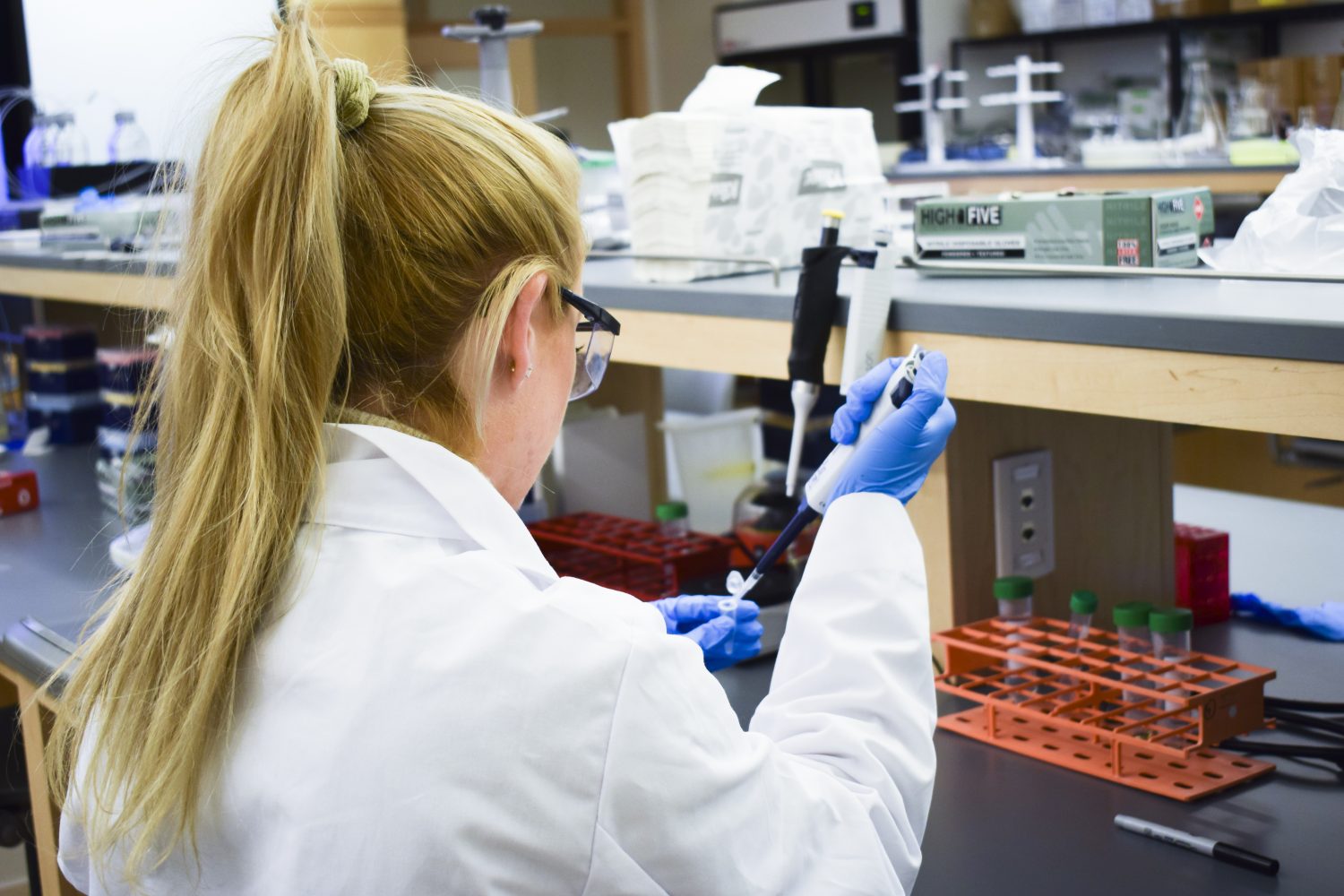Photo by Stefanie Erickson |CIGAR|Many students require the same labs to graduate. Combining them is expected to make more ease in the classroom.
Anatomy and physiology labs set to merge for 2018-2019 Semesters
The University of Rhode Island’s anatomy and physiology labs are set to merge starting with the 2018-2019 academic year, sparking a lot of chatter from both faculty and students.
“When I was first hired here, one of the first questions I had was, ‘why are we teaching anatomy and physiology to freshmen separately,’” Aura Grandidge, manager of the anatomy and physiology labs at URI and a passionate advocate for the upcoming merge, said.
That’s right, the anatomy and physiology labs are coming together for what Grandidge believes will greatly benefit the URI community. She dedicates her inspiration and support of this movement to a workshop she saw, in which undergraduate students were performing complex concept labs.
Amazed by the level of competency the students displayed by building on concepts in Anatomy and Physiology 1 and 2, Grandidge became more confident in her beliefs than ever that the merge serves in the best interest of URI students. Said labs, currently located on the third and second floors of the Center for Biotechnology and Life Sciences (CBLS), serve a variety of STEM related majors here on campus, with five of them in particular.
Grandidge notes that when the idea of the merge was still in its inception, a roster was pulled to observe lab class enrollment by major. Five majors came to the forefront, including kinesiology, nursing, Doctor of Pharmacy (PharmD), pharmaceutical sciences and nutrition. She adds that students in all departments will be affected, however, the merge will have the largest impact on freshmen in the majors listed.
As of this semester, freshman nursing students take anatomy in their first semester and physiology in their second. Grandidge believes this is neither conducive nor productive to students’ academic success, as the learning curve alone is enough to completely turn some first year nurses off from the program. Caroline Ohsberg, a freshman nursing student, agrees.
“I think overall the classes are both harder than any anatomy/science class I took in high school, but the professors, while not easy, are good with helping you ease in and motivating you,” Ohsberg said.
Grandidge hopes that the coming change will help ease future freshmen into the program even more so than ever. By teaching form and function together, students will hopefully better understand the curriculum’s concepts, especially if they did not take an anatomy class in high school.
The classroom setting is expected to be more dynamic and involved. Rather than looking at muscle structures for an hour, students will simultaneously learn how those same muscles function. In addition, professors will no longer have to refresh students on old information, but instead build on new knowledge. Next year’s students will take Anatomy and Physiology 1 in the old anatomy lab on the third floor, while A&P 2 will be held in the old physiology lab on the second floor.
In direct opposition to popular thought, the merge will not cut back on material, but actually add to it. Grandidge looks forward to the readdition of topics such as histology (the study of cells) and sensory anatomy (the study of sensory organs like the eyes, nose and ears), two subfields the University has not taught for quite some time now. She also hopes that the merge will bring a better understanding to more obtuse topics in the anatomy and physiology world, such as reproductive anatomy, which is the most complex form of physiology and has confused students for years in the past.
Moreover, students will only need to buy one set of class materials for the entire year instead of new materials for each semester, a hefty investment at first, but one Grandidge has full faith will pan out for the best.
Nonetheless, a shift of this magnitude is bound to have some stressors attached. “I really don’t know what to think of it [the merger],” Ohsberg said. “To me the classes are just so different I don’t really see how they can be combined and still make sense, the topics are just so different.”
Grandidge is fully aware of these beliefs, and that the first couple semesters are sure to be very trial and error with many areas that need smoothing over, especially since there are about a thousand students set to take both A&P 1 and 2 next year. She stresses the importance of bringing any and all questions regarding the implications of the merge to her, whether in person or via email.
“If you’re taking anatomy and physiology, it’s because you’ll need it for your future career,” Grandidge said. “[The merge] is a big commitment, but the faculty are only thinking of you.”





